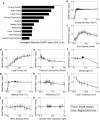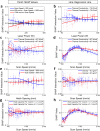Material-agnostic machine learning approach enables high relative density in powder bed fusion products
- PMID: 37848436
- PMCID: PMC10582079
- DOI: 10.1038/s41467-023-42319-x
Material-agnostic machine learning approach enables high relative density in powder bed fusion products
Abstract
This study introduces a method that is applicable across various powder materials to predict process conditions that yield a product with a relative density greater than 98% by laser powder bed fusion. We develop an XGBoost model using a dataset comprising material properties of powder and process conditions, and its output, relative density, undergoes a transformation using a sigmoid function to increase accuracy. We deeply examine the relationships between input features and the target value using Shapley additive explanations. Experimental validation with stainless steel 316 L, AlSi10Mg, and Fe60Co15Ni15Cr10 medium entropy alloy powders verifies the method's reproducibility and transferability. This research contributes to laser powder bed fusion additive manufacturing by offering a universally applicable strategy to optimize process conditions.
© 2023. Springer Nature Limited.
Conflict of interest statement
The authors declare no competing interests.
Figures




Similar articles
-
Occupational exposure during metal additive manufacturing: A case study of laser powder bed fusion of aluminum alloy.J Occup Environ Hyg. 2021 Jun;18(6):223-236. doi: 10.1080/15459624.2021.1909055. Epub 2021 May 14. J Occup Environ Hyg. 2021. PMID: 33989129
-
Microstructural and Nanoindentation Investigation on the Laser Powder Bed Fusion Stainless Steel 316L.Materials (Basel). 2023 Aug 30;16(17):5933. doi: 10.3390/ma16175933. Materials (Basel). 2023. PMID: 37687627 Free PMC article.
-
316L Stainless Steel Powders for Additive Manufacturing: Relationships of Powder Rheology, Size, Size Distribution to Part Properties.Materials (Basel). 2020 Dec 4;13(23):5537. doi: 10.3390/ma13235537. Materials (Basel). 2020. PMID: 33291734 Free PMC article.
-
Advancements in the Additive Manufacturing of Magnesium and Aluminum Alloys through Laser-Based Approach.Materials (Basel). 2022 Nov 16;15(22):8122. doi: 10.3390/ma15228122. Materials (Basel). 2022. PMID: 36431608 Free PMC article. Review.
-
Multimetal Research in Powder Bed Fusion: A Review.Materials (Basel). 2023 Jun 9;16(12):4287. doi: 10.3390/ma16124287. Materials (Basel). 2023. PMID: 37374471 Free PMC article. Review.
References
-
- Bibb, R. Physical reproduction – rapid prototyping technologies. Med. Model10.1533/9781845692001.59 (2006).
-
- Ahmed N, Barsoum I, Haidemenopoulos G, Al-Rub RKA. Process parameter selection and optimization of laser powder bed fusion for 316L stainless steel: a review. J. Manuf. Process. 2022;75:415–434.
-
- Al-Maharma AY, Patil SP, Markert B. Effects of porosity on the mechanical properties of additively manufactured components: a critical review. Mater. Res. Express. 2020;7:122001.
-
- Olakanmi EO, Cochrane RF, Dalgarno KW. Densification mechanism and microstructural evolution in selective laser sintering of Al–12Si powders. J. Mater. Process. Technol. 2011;211:113–121.
-
- Prashanth KG, Scudino S, Maity T, Das J, Eckert J. Is the energy density a reliable parameter for materials synthesis by selective laser melting? Mater. Res. Lett. 2017;5:386–390.
Grants and funding
LinkOut - more resources
Full Text Sources

